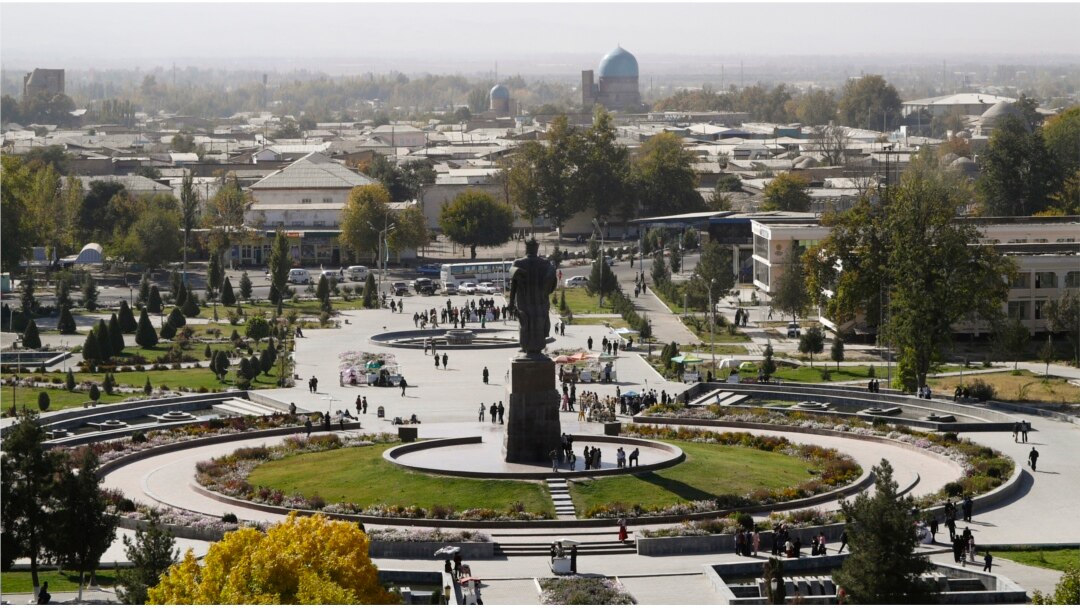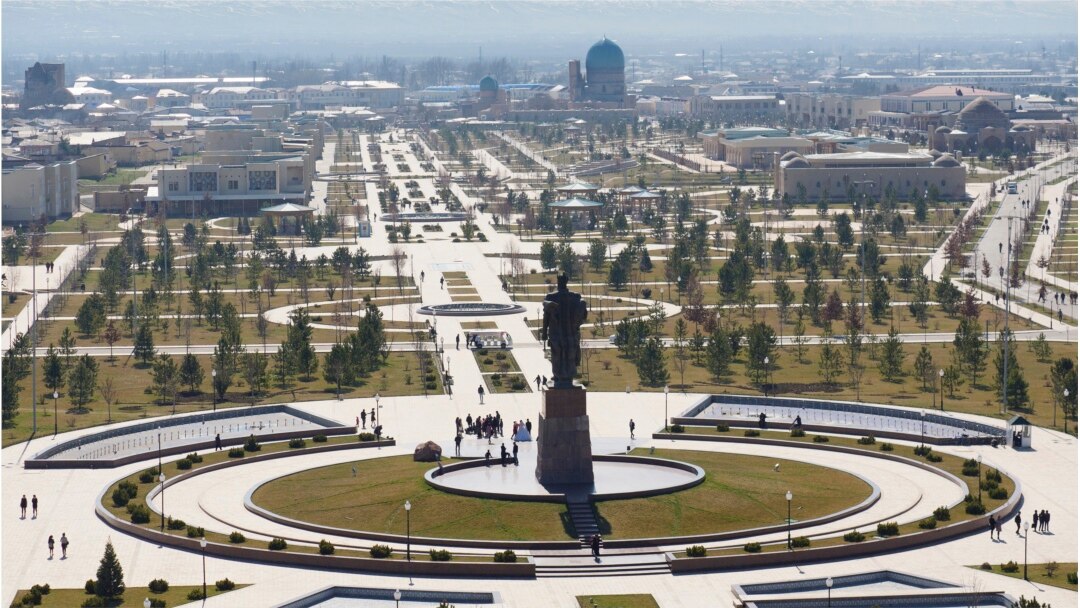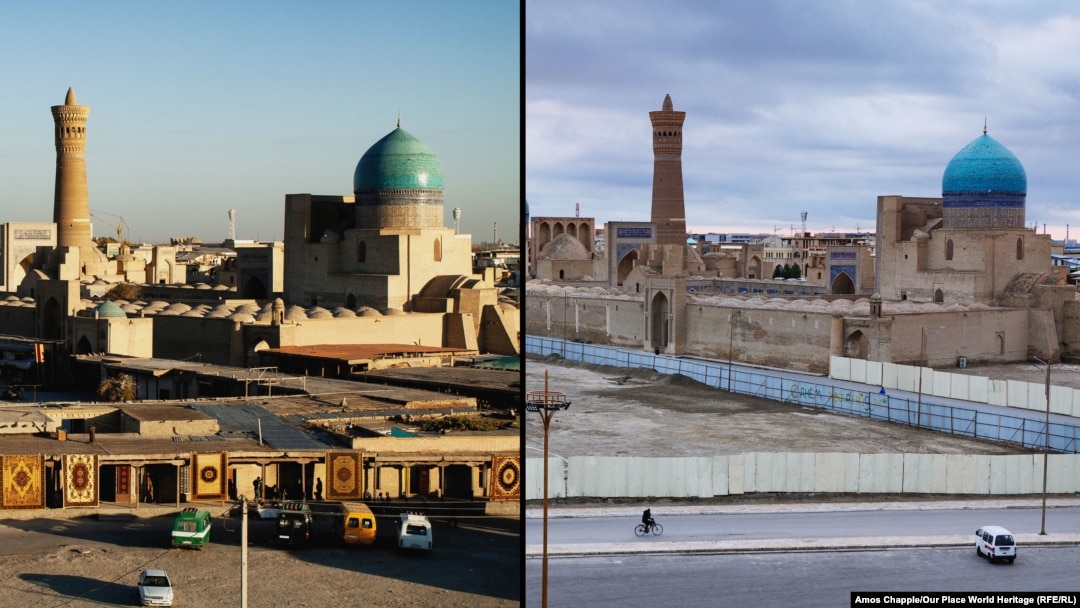Thirteen years after his first trip to Uzbekistan, RFE/RL photographer Amos Chapple revisited two of the country’s UNESCO World Heritage sites to find them transformed by the “accelerated development” the country has embraced in order to attract tourism.

The center of Shakhrisabz, which was once a trading stop on the ancient Silk Road, in summer 2007.
1. Shakhrisabz
The city was added to the UNESCO World Heritage List in 2000 thanks to its “exceptional monuments and ancient quarters which bear witness to the centuries of its history.”

The same view of Shakhrisabz in 2020.
In 2014, the city’s medieval town was demolished by a fleet of bulldozers based on a decree by President Islam Karimov.
After the extent of the destruction was revealed, UNESCO debated removing the city’s World Heritage listing. In 2019, with the proviso that Uzbekistan “develop a draft plan for the regeneration of the city,” Shakhrisabz was allowed to keep its World Heritage status.
A visitor to Shakhrisabz who witnessed the demolition of the historic center wrote “the city looks like right after a massive war, or if a hurricane had leveled everything.”
The most important of the town’s ancient buildings were left intact, but some have undergone heavy-handed renovation.
The 19th-century Abdyshukur Agalik Madrasah in the center of Shakhrisabz in 2007 (left) and 2020.
The restoration of the madrasah included modern building materials and techniques replacing ancient brickwork. The dome appears to have been completely rebuilt.
The front of the Abdyshukur Agalik Madrasah in 2007 (top) and 2020.
The school used to be accessed through an enclosed courtyard; it now opens directly onto the vast concrete space created by the demolition of the old center of Shakhrisabz.
2. Bukhara
The 16th-century skyline of Bukhara and a market in the foreground in 2007.
Most of the market area was rebuilt by the Soviets after a Red Army bombardment wiped out the original buildings during the 1920 invasion of Bukhara.
The same site in 2020 after the market was demolished in 2017.
A local historian who asked to remain anonymous told RFE/RL that “our former President [Islam Karimov, who died in 2016,] felt that once we became an independent country this Soviet stuff should not be here.... In my opinion, though, it was already a part of the spirit of the city.”
An edge of the Soviet-era market in Bukhara in 2007.
The same street in 2020. Shopkeepers whose businesses were demolished were relocated to newly built shops outside the historic center.
A construction project called Shakhristan is planned for the space, which will feature a two-story market with “traditional craftsmen workshops, retail shops, and stalls trading national souvenirs, gold-embroidery products, books, fruits and vegetables, sweets, and other products demanded by tourists.”
A woman selling crockery in the historic center of Bukhara in 2007.
The same location in 2020, as Bukhara’s historic center has been filled with new buildings which are hard to distinguish from the city’s heavily renovated ancient structures.
The Bukhara historian believes the drive to revamp Uzbekistan’s historic centers was a result of President Karimov, who “saw the untidy old places and thought it made us look undeveloped, so he decided we should just get rid of them.” That policy appears not to have changed under the rule of Karimov's successor, Shavkat Mirziyoev.


